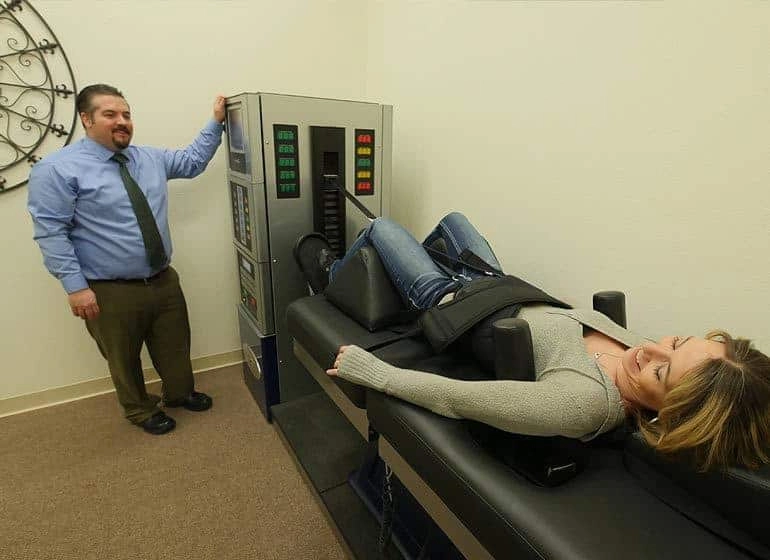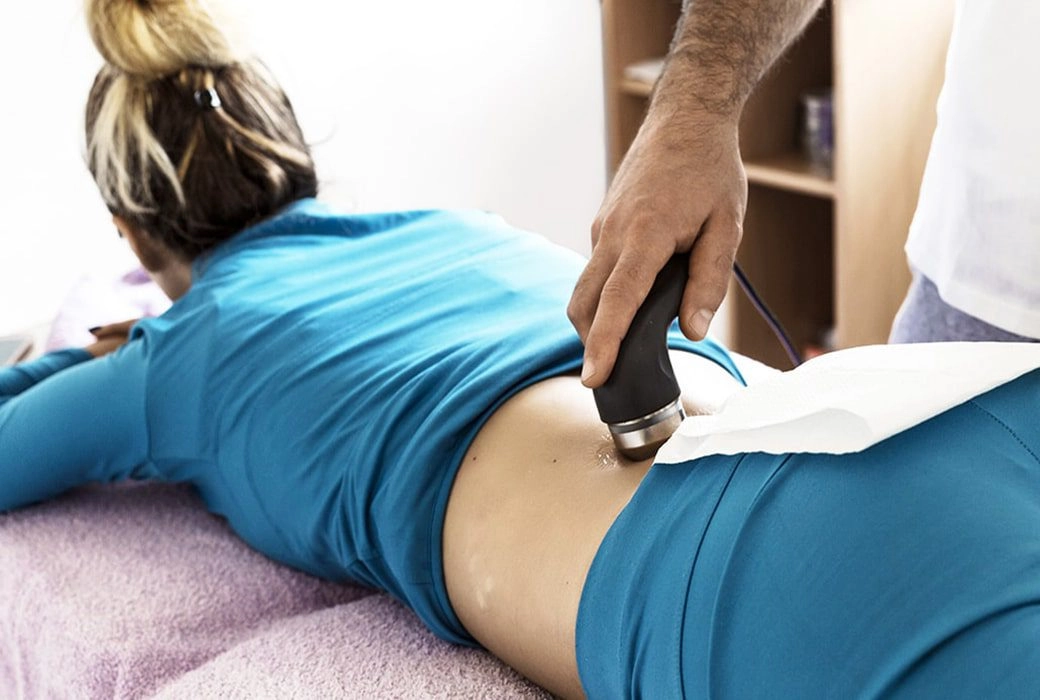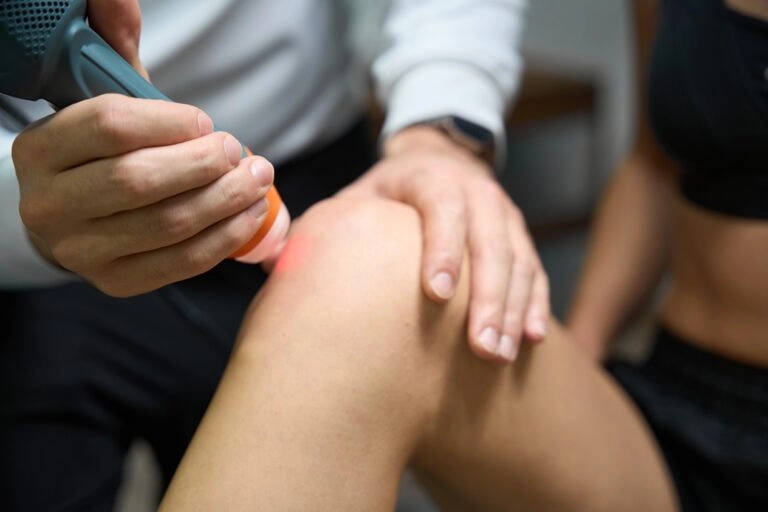We tend to take simple movements like walking, bending over, sitting down, or lifting objects for granted until lower back pain makes them nearly impossible to perform. Lower back pain affects millions of Americans every single day and can be very limiting to your lifestyle, career, and everyday life. Luckily, there are a variety of modalities chiropractors use to alleviate, or even entirely treat, low back pain in patients.
The one we’ll be focusing on today is called the DRS System. This technology-based system is an effective treatment method that creates lasting comfort and strength in the lower back. It’s one of the best treatments for alleviating lower back pain, and chiropractic physicians and physical therapists alike agree on its benefits.
At Better Health Chiropractic, we integrate four unique phases of a complete DRS treatment regimen. This involves the in office DRS therapy, home exercises, chiropractic care, and physical rehabilitation therapy.
We’ll get into the details of that later, but for now, let’s get a better sense of lower back pain and where it comes from so that we can see why our DRS system is so uniquely suited for treating low back pain.
All About Low Back Pain
Lower back pain arises from the lumbar part of the spinal column. This part of your spine is a strong, intricate network of interconnected bones, joints, nerves, muscles, and vertebrae. It’s a very strong area of the body (ideally) because it supports the rest of the spine and the entire weight of the upper body while allowing for movements like twisting and bending. It also allows the hips to rotate and move while walking, and the nerves in this area supply power to the pelvis, legs, and feet.
As you can tell, this is an especially important area of the body to keep happy, healthy, and mobile, since it’s connected to pretty much the rest of the entire body. To boot, the rest of the body relies on it for some pretty important functionality!
That’s why lower back pain can be so incredibly limiting, and painful in many ways beyond a simple stinging pain in one area. It can radiate out to any and all of these other parts of the body it’s connected to.
Potential Causes
You might be wondering what exactly causes lower back pain, especially considering what a strong and important area of the body this is. There are a few different causes, and it’s easiest to explain them in terms of acute (or new, fresh, concentrated pain) or chronic (long-term, recurring) pain.
Acute Low Back Pain
Acute lower back pain is sudden, concentrated, and new. Most of the time, it happens because of an injury to the soft tissue of the lower back, including muscles, ligaments, or joints. It can result from a more serious injury to discs or compression of nerves in the spinal column in that lower area. It can also result from improper movement of this area of the body during exercise or manual labor, for example. Other sudden movements like a fall or sports injuries can also cause this.
Acute lower back pain is most commonly a result of a pulled or torn ligament or muscle, usually involving an improper twisting motion or putting too much weight on the area.
Most people don’t know that it can also develop over time with causes like poor posture, but usually, it’s a more sudden situation.
Chronic Low Back Pain
Chronic low back pain is classified as pain that has lasted for more than 3 months and doesn’t seem to be fixing itself through the body’s natural healing process. It can also be recurring, not necessarily in the forefront of your mind every day. Usually it’s caused by an compressed nerve root or a joint or disc problem. Some of the most common causes of a chronic back pain condition include:
- Lumbar herniated disc – this condition causes inflammation in the area due to an exposed nerve root and a compression of surrounding nerves.
- Degenerative disc disease – as we age, it’s natural for the discs in our spine to lose water and nutrients over time. This loss of fluids can lead to lots of issues in the lumbar region, and can also contribute to stenosis.
- Facet joint dysfunction – facet joints are behind each disc in your spine that are rich in cartilage and nerves, and they can get easily torn or irritated, causing intense concentrated pain.
- Sacroiliac joint dysfunction – this joint is at the very bottom of the spine, connecting to the sacrum and the sides of the pelvis. It’s a strong joint, but any sort of dysfunction here can cause chronic, intense pain in the entire area. This can happen with little to no movement of the joint, inflammation, or shock.
- Spinal stenosis – this condition is concentrated in the spinal canal, and it involves the spinal column narrows in on the nerve roots and causing intense pain.
- Spondylolisthesis – this is a condition in which one vertebra overlaps an adjacent one, caused by inactivity or instability in the area. It can cause compressed nerves.
- Osteoarthritis – this is another degenerative type of disease, which involves wear and tear on the spinal column over time, slowly progressing over time.
- Deformity – if a deformity in the spine, such as an irregular curvature, scoliosis, or kyphosis, leads to a breakdown of the discs themselves of the facet joints, it can lead to chronic lower back pain.
- Trauma – of course, any sort of intense trauma to the area will also cause acute and possibly chronic pain. This can involve anything from a car accident to a small fall, which if not evaluated properly, could get worse over time.
- Compression fracture – finally, a compression fracture happens with the bone or vertebra basically caves in on itself, which really only happens with a degenerative condition causing weakness in the bones themselves.
Some Stats
To give you a sense of just how widespread this problem is, let’s take a look at some statistics about lower back pain. Odds are, you know someone, if not a few people, in your life who complain about low back pain constantly.
About 15% of Americans are experiencing lower back pain right at this very moment – that’s millions of people! It’s estimated that about 85% of Americans will experience low back pain at some point in our lives, whether it be acute or development of a chronic condition. It’s also the leading cause of disability in people over 45, and is the second most common reason people miss work and visit their doctor.
If you, or the loved one in your life, is suffering from low back pain, you’re likely trying to find external solutions like more supportive chairs, stretching at home, or other options. However, it’s likely that the source of the pain can really only be truly treated with the care of a chiropractor. Along with adjustments and lifestyle changes, treatment methods like the DRS System will give them much more security in knowing that their lower back pain will be relieved.

What Is The DRS System?
If you’re looking for a solution to offer to your friend or loved one suffering from low back pain, the DRS System is the way to go. It’s a form of back pain treatment that involved the use of a traction device to remove pressure from specific discs in the spine using a distraction and decompression technique. It was approved by the FDA in the 1990s and introduced by Better Health Chiropractic & Physical Rehab in 2001.
It’s the first FDA-approved decompression system with the patient on their back. This is significant because other spinal decompression systems required the patient to lay face down holding a bar over their head, which actually caused their backs to be put into further extension, which wasn’t optimal for decompression.
The DRS System is also the first FDA-approved treatment method that can treat specific discs, rather than an entire area. This kind of targeted care is especially important for conditions arising from vertebral issues.
It’s special and effective because it’s a non-surgical, non-invasive form of therapy for issues previously requiring a surgical procedure or the kind of non-effective treatment mentioned above. It provides relief in nearly 9 out of 10 patients, so it has awesome success rates as well.
The DRS System procedure was developed by renowned neurosurgeon and researcher C. Norman Shealy, M.D., Ph.D., F.A.C.S. Dr. Shealy performed years of rigorous research, and then founded his own Shealy Institute for pain management after the success of this pain relief method.
Rigorous Testing
You can be assured that the DRS System has undergone years and years of rigorous testing in order to ensure it’s good options for patients who are really suffering from the condition. During these tests, researchers found the method to be safe and effective ,with a 70-86 percent complete success rate (meaning pain was entirely gone), and more than 90 percent of the same patients reported that their condition improved “significantly” after undergoing the treatment.
Furthermore, most patients see an improvement of about 50 percent in terms of pain levels and daily bodily function and motion after just one treatment. After completing the full regimen, most patients say their pain is reduced by 75 to 90 percent.
At Better Health Chiropractic & Physical Rehab, we’ve treated more than 7,000 Alaskans with the DRS system and found great success. Most patient symptoms are 50-75% improved within the first 4-5 weeks, and at the completion of treatment most patients will be 75-90% improved, and many are completely symptom-free.
What Does A Typical Session Look Like?
You might be wondering what exactly happens during a DRS System session. First, the patient lays back on the treatment bed under a blue light. Then, the decompression traction device moves along the back, working its magic. The entire process is monitored by a trained technician, and it’ll take about 30-40 minutes total per session. Many patients actually fall asleep during the treatment because it’s so relaxing and pain-free!
As mentioned above, an mostpatients will experience some immediate relief right after the treatment.
Most patients also do 15 to 25 sessions over a 5 to 6 week period for a complete treatment and relief. However, at Better Health, our DRS System is a bit more comprehensive. In conjunction with the DRS sessions, we also follow up with chiropractic care and rehabilitative therapy, as well as some at home exercises as part of the Alaska Back Pain Protocol. This ensures that the effects of the DRS session are cemented into your body, and that we are doing all we can to make sure the patient feels complete relief and their body functions properly out of the office.
Conditions Treated by the DRS System
The DRS System is ideal for patients suffering from herniated discs, sciatica, degenerated discs, and a variety of other lumbar spinal conditions. Any pain in the lumbar region can be treated with the DRS System, although its helpful for the chiropractor to do a full assessment to make sure you’re getting targeted care. The low back pain can be stemming from a number of issues, so while the DRS System might be the best treatment for you, a comprehensive evaluation of your condition can help the chiropractor give you the best-tailored treatment for you.
Benefits Of The DRS System
There are almost countless benefits of the DRS System. In terms of pain relief, it can relieve lumbar pain and relieve the pain associated with conditions like arthritis or osteoarthritis, stenosis, sciatica, and more. It also treats bulges, herniations, or degeneration of discs in the lumbar spine, and provides a distraction of irritated joints.
In terms of functionality, the DRS system can also decrease leg pain or numbness, thus improving your body’s range of motion overall and allowing you to perform everyday tasks like sitting down, lifting objects, walking, bending, or twisting, which may not have been possible for you previously.
Last but not least, you get long-term, lasting results from our comprehensive DRS System treatment. As if that’s not enough, it’s also covered by most insurance, and there’s no recovery period with this treatment method – just a pain-free, immediate lifestyle improvement! If you or a loved one is suffering from low back pain, call our office location nearest to you today to set up a consultation and see if this treatment method can help you!









